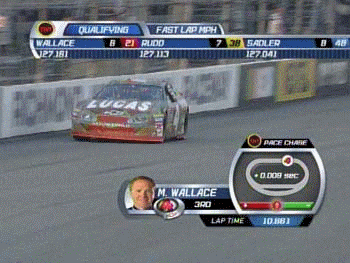gofour
Rookie
(9/8/05 12:17 am)
|
 Quick answer to Don's camber question
Quick answer to Don's camber question
Don,
You are correct - the contact patch is a key issue among others
Generally speaking:
Increasing positive camber (top of the tire tilted out) in the RR will loosen the car from the center of the turn through exit.
Conversely increasing negative camber (top of the tire tilted in) in the RR will tighten the car from the center of the turn through exit.
Increasing negative camber (top of the tire tilted in) in the LR will loosen the car entering a corner.
Conversely increasing positive camber (top tilted out) on the LR will tighten the car entering the corner.
The most common way to change this on a solid rear axle car is to heat the axle housing (either top or bottom depending on which way you want to adjust) and then cool it rapidly. The metal will then contract to a greater degree than it expanded which will shorten the treated surface of the housing compared to the untreated surface - in effect "bending the axle housing" slighly and directly effecting the resultant camber. This can be tricky as treatment not exactly on the top or bottom centerline may effect the toe in or out as well. It is inexact (hard to keep the heat effected zone controlled with the torch and rosebud) and may take a few attempts to get the desired result (I know I've been through it).
Given that the degree of rear camber has been controlled by NASCAR for several years - teams most commonly purchase housings that have been pre-fabricated to fit the hub interface at the proper angle. The rule went into effect due to the excessive camber angles many were using were leading to axle breakage, seal failure, etc... (remember the axle itself is still straight). When this happens the rear wheel itself seperates from the car with the axle shaft attached - quite dangerous for all involved).
Anyway it is a tool that is very effective when the other adjustments are not achieving the desired results.
Gofour
|

